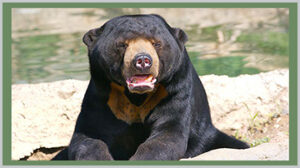Vulnerable Species
A vulnerable species is one which has been categorized (IUCN) as likely to become endangered unless the circumstances that are threatening its survival and reproduction improve.
DWARF CROCODILES: Crocodilians were once abundant in many tropical waters around the world. Crocodiles, along with their relatives the alligators, caimans, and gavials, are ancient animals that walked the Earth alongside the dinosaurs. Throughout history (continue)
WEST INDIAN MANATEE: Although their bulbous, whiskery face makes this hard to believe today, manatees are probably the source of legends about mermaids. Their human-like eyes must have captivated the early European sailors who caught fleeting glimpses of them (continue)
BLUE HYACINTH MACAW: Many people are familiar with macaws and parrots as pet store animals. It might be difficult, then, for people to imagine what these large, loud, beautiful birds look like in the wild. The spectacular flash of color of a wild macaw is becoming more (continue)
LEATHERBACK SEA TURTLE Once a male leatherback sea turtle struggles from its egg and makes its way to the sea as a 4-inch (10 cm) hatchling, it may never again return to land during its 80-year lifetime. Although they are air-breathing animals born on land, leatherbacks (continue)
MALAYAN SUN BEAR: The smallest bear in the world, an adult male Malayan sun bear is about 4 feet (1.2 m) tall when standing on its hind legs and can weigh up to 140 pounds (64 kg). Despite their small size, sun bears can be very dangerous. Named for the golden crescent, or “U” (continue)
SHORT-TAILED ALBATROSS: As described in this famous poem by Samuel Taylor Coleridge, sailors have long considered the albatross to be a good omen. Early ocean explorers believed that sighting a bird meant land was nearby. There undoubtedly were many (continue)





